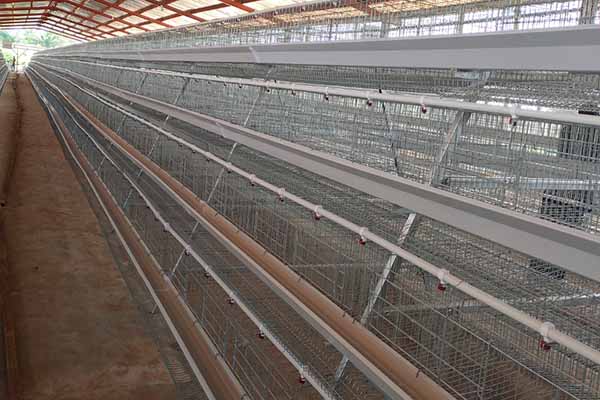Optimizing Chicken Battery Cage Systems for 400,000 Chickens in Uganda
Introduction to Chicken Battery Cage Systems
The adoption of chicken battery cage systems has revolutionized the poultry industry, especially for large-scale farming operations. In Uganda, with a significant number of chickens, a well-designed battery cage system is crucial for efficient production and animal welfare. This article delves into the requirements for a battery cage system that can accommodate up to 400,000 chickens, focusing on the key aspects that contribute to its success.
System Design Considerations
When designing a chicken battery cage system for 400,000 chickens, several factors must be taken into account:
- Space Allocation: Each chicken requires adequate space for movement and comfort. Typically, 0.15 to 0.25 square meters per chicken is recommended.
- Airflow and Ventilation: Ensuring proper airflow is vital to maintain optimal environmental conditions and prevent respiratory diseases.
- Feeding and Watering Systems: Efficient feeding and watering systems are essential to maintain productivity and reduce waste.
- Health Monitoring: Regular health checks are crucial for early detection of diseases and prompt treatment.
System Specifications for 400,000 Chickens
For a system designed to house 400,000 chickens, the following specifications are generally recommended:
| Component | Requirement |
|---|---|
| Total Cage Capacity | 400,000 chickens |
| Cage Dimensions | Length: 2 meters, Width: 0.5 meters, Height: 0.8 meters |
| Airflow | Minimum of 5 cubic meters per chicken per hour |
| Feeding Systems | Automatic feeding systems with a capacity to feed up to 20,000 chickens |
| Watering Systems | Automatic nipple watering systems with a capacity to water up to 20,000 chickens |
Case Study: Success in Uganda
In Uganda, one of our clients successfully implemented a chicken battery cage system for 400,000 chickens. The system was designed with the above specifications and included the following features:
- Automated systems for feeding and watering
- Advanced monitoring systems for health and environmental conditions
- Easy-to-clean and maintain structures
As a result, the client experienced a significant increase in productivity, with an average egg production of 300 eggs per hen per year.
Conclusion
Designing a chicken battery cage system for 400,000 chickens requires careful planning and consideration of various factors. By following the guidelines outlined in this article, poultry farmers and investors in Uganda can create an efficient and profitable operation.
For a detailed design and free equipment quotation, contact us at livi mechanical. We offer personalized solutions for your poultry farming needs.





